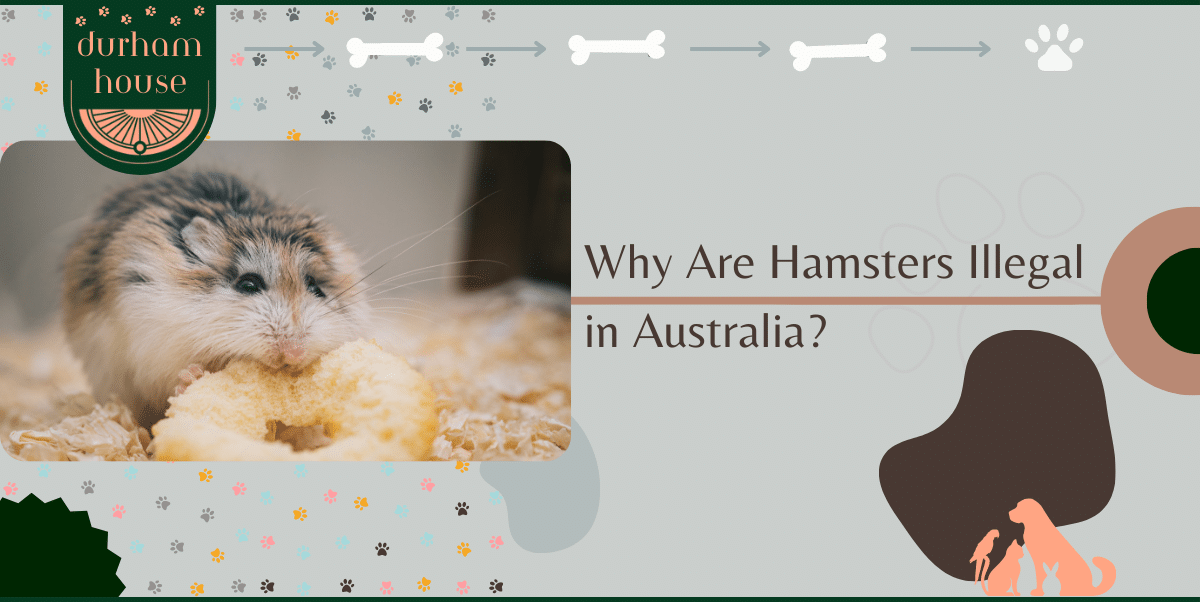Are hamsters really illegal in Australia? Totally innocent-looking and outrageously cute, surely the much-loved, decidedly popular, and truly beloved family pet could not be so harmful to the local environment that the Australian government have gone to the extent of legally banning them from even setting their tiny paws on Australian shores?
Perhaps more importantly, surely the pint-sized, highly-coveted, and admittedly adorable rodents are so insignificantly small, endearing, and charmingly sweet, that their impact on the native flora and fauna would, realistically, be completely minimal? Really – how much damage could an innocent little hamster actually do to a place? That is to say, would a hamster’s minuscule presence even be noticed or felt by Australian locals or the native Australian wildlife, to the point that the fluffy little mammals need to be completely banned from even entering the down under nation’s states? Surely not!
But, if not, then why has Australia chosen to legally prevent hamsters from coming ashore? Indeed, why are hamsters considered to be, and treated like, illegal aliens in Australia? Quite literally exiled, strictly prohibited and criminally outlawed, do these undoubtedly cute and cuddly, furry mini fluff balls even deserve this elevated criminal status? Well, the Australian government sure seems to think so – and here’s why.
Hamsters: Pets or Pests? How These Exotic Rodents Put Native Australian Flora and Fauna at Risk and Threaten Australia’s Local, Naturally Occurring Ecosystems
Despite how cute, cuddly and innocent a hamster may appear, the actual truth is that these rodents are not a species that is native to Australian shores. In fact, hamsters are considered an exotic species in Australia, and as such, are not welcome here. But what is an exotic species, and why do they often become treated and thought of as pests after they are introduced to an area that they are not originally native to?
To begin with, an exotic or non-native species is a plant or animal that has been introduced to an environment, region or ecosystem within which they are not naturally occurring, or a locality they do not usually inhabit. For example, in Australia, native flora and fauna include local plant species such as bottle brush, eucalyptus gum trees, and wattle trees, and native animal species such as koalas, kangaroos, wallabies and emus, just to name a few. On the flip side, exotic, non-native species which have been introduced (in most cases, brought to Australia by foreign settlers), have historically included invasive plants such as weeds (for example, wild blackberry, nettle and bramble bushes), as well as animal species such as rabbits, foxes, squirrels, and of course, hamsters – all of which are now considered, and treated as, prohibited pests by the Australian government, environmental authorities, and law-enforcing bodies.
The Threat to Australia’s Local and Naturally Occurring Ecosystems, and The Risks to Australian Wildlife, and Native Australian Flora and Fauna
Also known as an invasive species or pest, when an exotic species is introduced to a foreign environment in which they are not usually naturally occurring or do not usually inhabit, disaster can ensue! For example, pest species such as rodents – including rabbits, mice and hamsters – can often over-graze and be extremely damaging to native plants and vegetation, disrupting the local environment’s naturally occurring ecosystem by causing literal uprooting of the flora in the region, as well as dramatically and drastically impacting the natural landscape. The results can be dire, and often the local vegetation can never bounce back.
Invasive pest species can also often be carriers and spreaders of infectious diseases, which the native environment is more often than not, not equipped to combat or overcome. It is for this reason that exotic species such as hamsters are legislatively prohibited from existing in Australia.
The Consequences of Hamster Ownership in Australia, as well as the Importation of Hamsters onto Australian shores
By importing a hamster into Australia, or even owning a hamster down under, you are quite literally breaking Australian law. As such, the implications and consequences are severe. At best, you will be presented with a fine. These fines are no laughing matter, however, and are often of quite significant value. At worst, importers of prohibited exotic species such as a hamster in Australia can even result in imprisonment! Surely a price not worthy of the act.
Photo by Juris Freidenfelds: https://www.pexels.com/photo/close-up-photo-of-hamster-on-hand-2013665/










